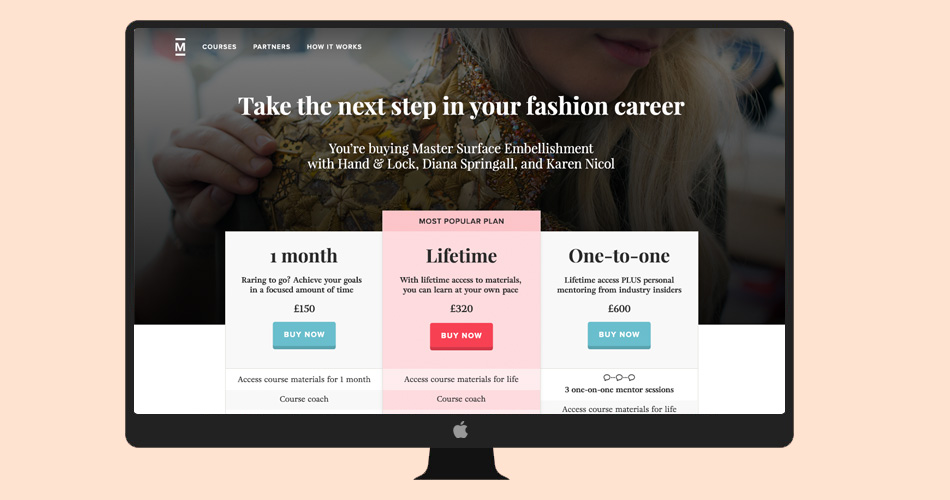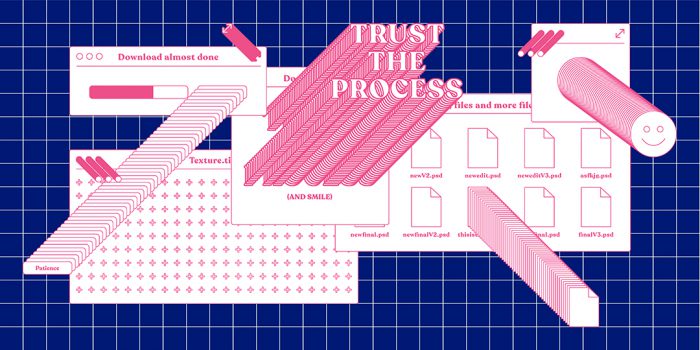Tips on UX & UI from Katie Marcus and Josh Smith

It’s no secret that digital advancements have shaken things up in the design industry. Job boards are increasingly peppered with a variety of UX/UI roles, ranging from strategist to product designer. But, how does a graduate eager to land such a role make sure they’re doing everything they can to get noticed? That’s where our #Shillindustry come in. We welcomed Josh Smith and Katie Marcus in for a guest lecture to share their expertise on UX & UI. With extensive backgrounds in the field working for companies like Google, Mastered and Stink Digital—they well and truly satisfied our curiosities.
Read on to learn about the influx of digital roles, the elements which make an impressive digital folio and resources for digital inspiration!
Would you say that there’s a growing rate of jobs for designers within the digital industry and if so, how can a recent graduate catch the eye of employers—what’s the 5 things you’d expect to see in their portfolio?
Digital design jobs have slowly started shifting from agencies to startup and in-house roles, and there are huge opportunities for both UI and UX/product jobs in these spaces.
Graduate candidates may struggle to find a role in startups as many small and mid stage startups are keen to conserve funds and will have a small design team of two or three, so they naturally don’t have the junior/internship type positions to fill until they are of a larger size. However they will always appreciate someone who is skilled, flexible and willing to contribute towards their vision.
More established large companies are also realising the need to keep up and be more digitally-focused, so this also represents a growing source of interesting roles for UX and UI. For example there’s really interesting work happening at Transport for London, Lego, and within the museum sector. Large organisations may also have better internship and career development programs than startups.
The most important thing for graduates is to show mature design thinking with a good level of polish to their designs. A portfolio should demonstrate:
- Case studies that explain the project goals and context alongside well-presented visuals.
- Initial sketches & wireframes, something to show thought process.
- Evidence that they can take a problem and design elegant solutions, and justify all the decisions that they made along the way.
- Evidence that they can do this over a variety of different projects, perhaps from different industries, to demonstrate range and adaptability.
- Demonstrate they they understand the impact/success factors of their work, ie include some data on increased ROI that their project contributed to.


You both have experience working with startups, can you tell us a bit about what it’s like to work at a startup—especially within your field?
Startups are attractive to me because there is typically a great deal of autonomy and a sense that the best idea will win out, whoever it comes from. There’s not usually a great deal of politics or hierarchy to get your ideas through, and you get to see the results of your work incredibly quickly.
You also get to expand your skills beyond design and get involved in other aspects of scaling a company, even internal practices such as onboarding and training. It’s ‘design’ in the broadest sense and you get to become a champion of design strategy and thinking. It’s a great space to learn and expand your skills.
I particularly like startups who are innovating in a space that is ripe for ‘disruption’, such as fintech and fashion/mass manufacturing. This brings inherent challenges such as forcing your customers to rethink what this industry means when it’s digital and future-thinking, but of course it means there’s a lot of opportunity to make an impact and solve a lot of societal or business problems. Startups are leaner and can pivot to what they learn from the market, so your work typically feels more meaningful.
At Shillington we teach Sketch and encourage students to use InVision. Are there any other programs or software that students hoping to work in digital should experiment with?
Sketch has now become the industry standard for UI design, so that’s a perfect start. (though Figma, Adobe XD and Invision’s soon to be released Studio do similar jobs).
When it comes to animation and prototyping, there are a few they can explore, from animation heavy Adobe After Effects, to Principle which is more for creating timeline transitions that are interactive, or if they don’t mind learning a bit of code, Framer is extremely powerful.
I’m also a strong proponent of Webflow which is a visual design tool that builds and launch responsive websites without having to know how to code. It’s been a godsend when building quick prototypes or even when I want to build a side project without needing the help of a developer. The code is clean, and with the upcoming interactions 2.0, it’s a really powerful product.

Given that both UX/UI are rapidly expanding fields can you recommend any resources to help keep on top of the advancements and gather inspiration for projects?
- Sansfrancis.co is a great list of all the sites & products out there that are design related
- Designernews.co for… designer news
- Medium is now home to a bunch of great UX blogs, from prototypr, UX Planet, Google design and lots more.
- Invision’s designbetter and blog
- https://airbnb.design for insights into Airbnb’s internal design process
- First Round Newsletter for startup news and insights
- Mind the product, interesting articles and meetups on product design
- Ted Tech ideas blog for future-facing inspiration and psychology trends
- IDEO blog for articles about design thinking
Huge thanks to Katie and Josh for coming in to speak at Shillington London and for taking the time to answer our questions! Be sure to visit their websites to see more of their amazing work.
Check out more of our industry interviews with speakers who’ve visited one of our Shillington campuses. Recent interviews include, Jason Little, The A Board Dude and Jane Bowyer.
Want to win some amazing prizes and stay in the loop with all things Shillington? Sign up to our newsletter to automatically go in the draw.







